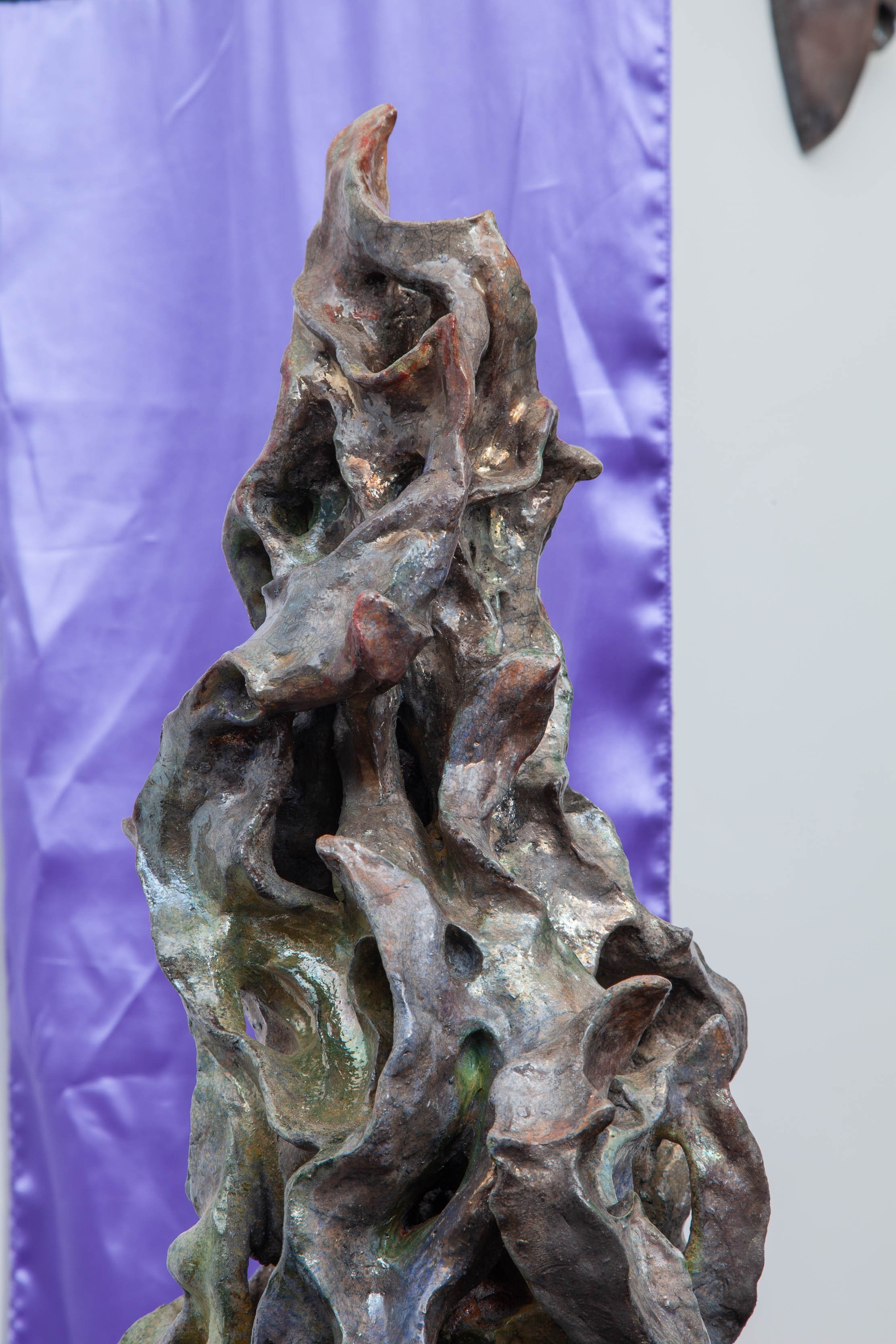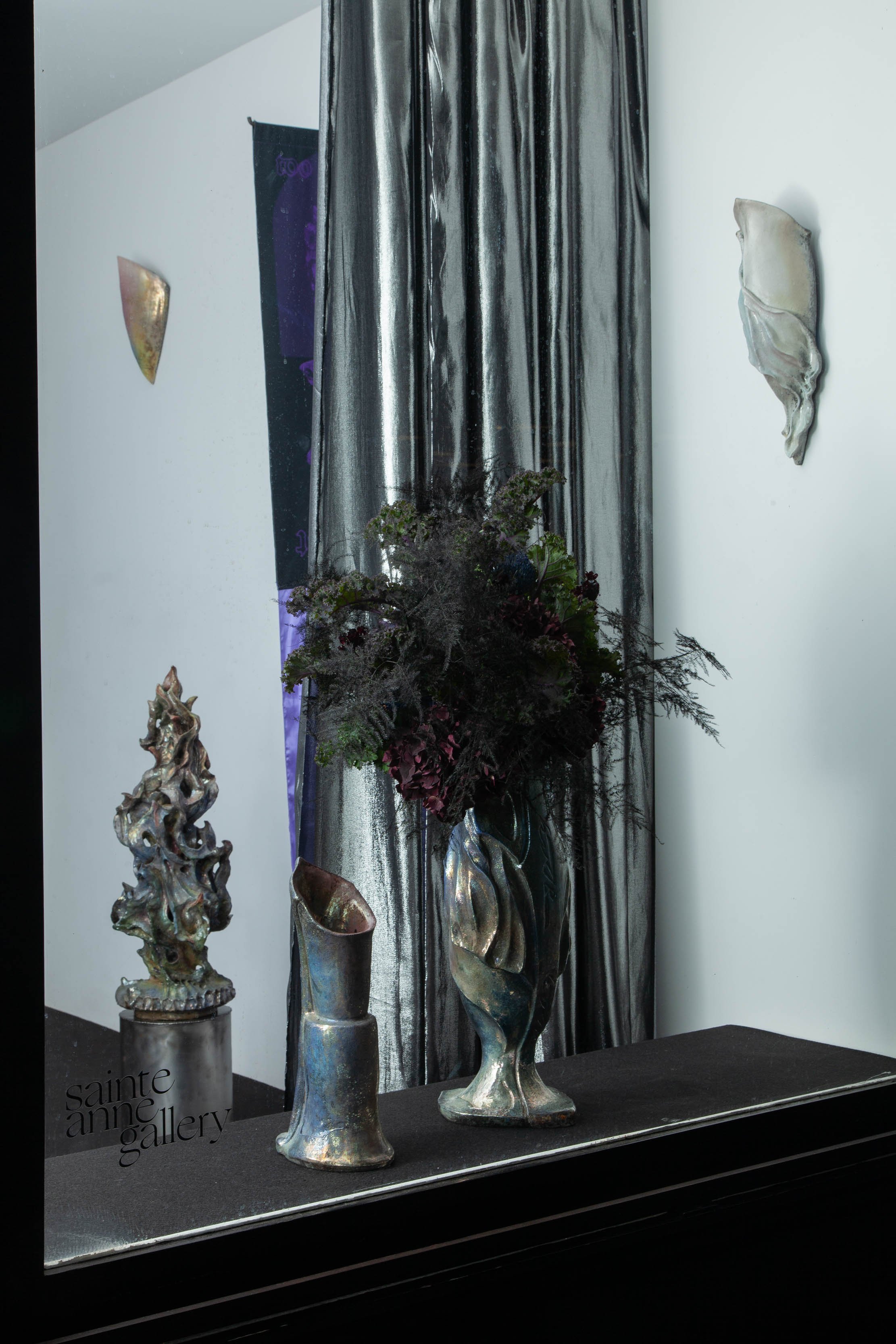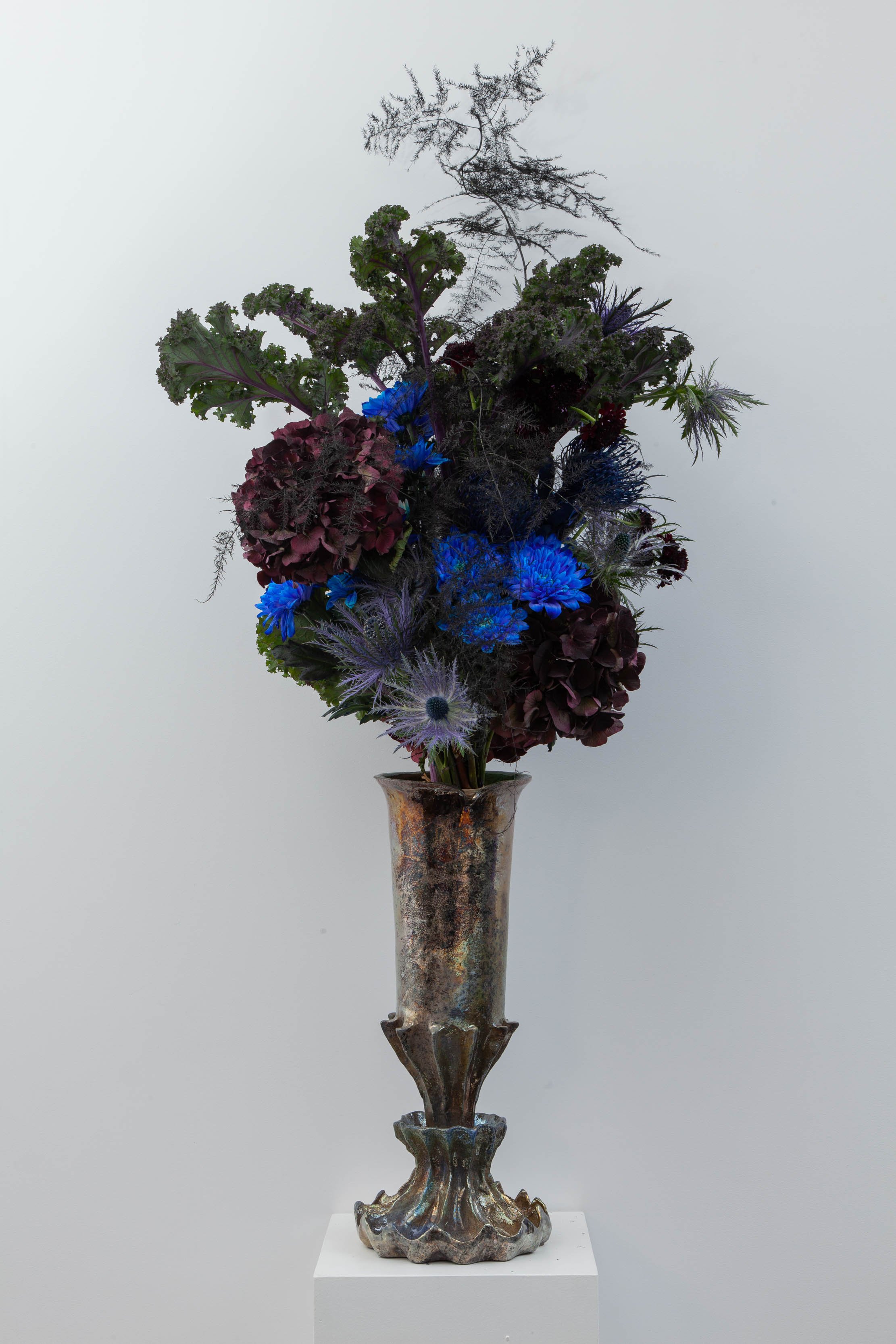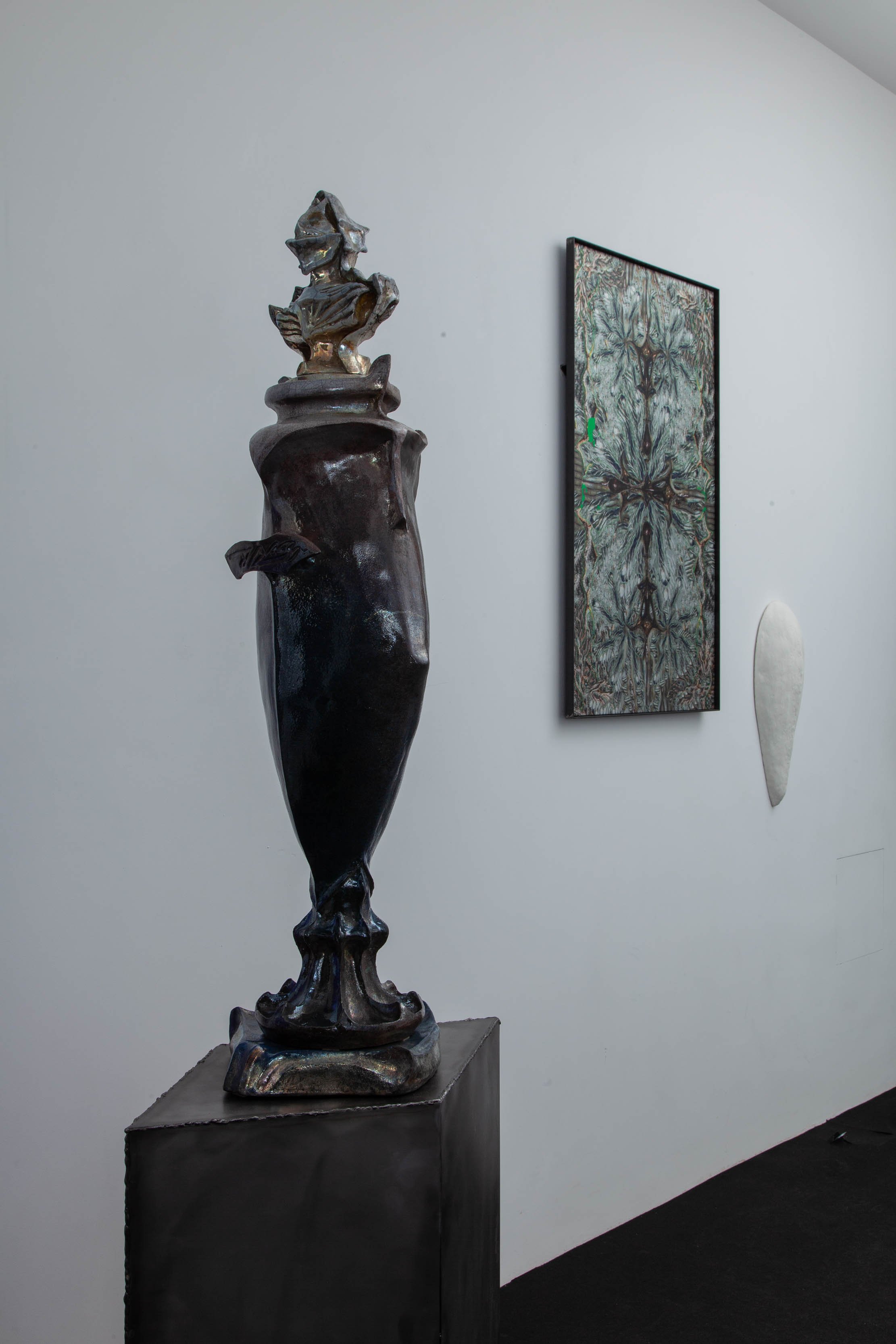DRIVE TO SURVIVE
11/2022 - 01/2023
Sainte Anne Gallery, 44 rue Sainte Anne, 75002, Paris.
Cur. Emmanuelle Luciani.
Artists : Bella Hunt & Ddc. Original music by Moodoïd.
Fever, tissus Métaphores. Flowers Debeaulieu Paris.
FR/ Conduire pour survivre.
Faire chauffer l’asphalte, pied au plancher, accélérer, s’avancer sur l’autoroute du progrès, les mains agrippées au volant d’une rutilante muscle car, piloter pour s’échapper.
La voiture individuelle incarne depuis son origine la foi dans le progrès technique comme vecteur de liberté et de vitesse, incarnation métallique des efforts physiques et intellectuels d’une humanité en quête de contrôle. Dans les poèmes hallucinés de Marinetti, les tournois de F1 ou les divertissements hollywoodiens façon Fast and Furious et ses américaines chromées, l’automobile est à la fois un mythe contemporain et un objet profondément populaire.
Mais l’ombre de la pollution et des effets climatiques de l’anthropocène ont peu à peu, à l’aube du XXIe siècle, donné à la voiture et, in fine, à la technologie, un visage inquiétant. De symbole d’émancipation et de confort, l’automobile, celle des courses professionnelles comme celle du quotidien, est devenue l’emblème ardent et gorgé de souffre du changement climatique. L’angoisse moite et étouffante des années 2020 efface de l’horizon la beauté de la vitesse, autrefois célébrée.
Drive to Survive est une fuite en avant pour échapper à la solastalgie d’un monde sclérosé. Les oeuvres présentées sont des écho-fantasmes des moteurs thermiques, de la machine, des formes acérées, de la lumière synthétique et nocturne des grandes villes et surtout de la voiture, représentée comme le vestige archéologique d’un futur lointain. Dans un soubresaut enragé, les artistes rendent hommage aux utopies futuristes du XXe siècle ainsi qu’à l’imaginaire populaire de la vitesse dont la voiture est l’avatar flamboyant, mais provoquent aussi une secousse salvatrice, seule issue d’un abattement généralisée et existentiel.
Photographies © Emile Barret
© Jordi Theler
EN/ Drive to survive.
Heat up the asphalt, put your foot down, accelerate, move forward on the motorway of progress, with your hands clutching the steering wheel of a gleaming muscle car, drive to escape.
The individual car has always embodied faith in technical progress as a vehicle for freedom and speed, the metallic embodiment of the physical and intellectual efforts of a humanity in search of control. In Marinetti's hallucinatory poems, in F1 tournaments or in Hollywood entertainment such as Fast and Furious with its chrome Americans, the automobile is both a contemporary myth and a deeply popular object.
But the shadow of pollution and the climatic effects of the Anthropocene have gradually, at the dawn of the 21st century, given the car and, ultimately, technology, a worrying face. From being a symbol of emancipation and comfort, the car, whether for professional or everyday use, has become the fiery, sulphurous emblem of climate change. The sweaty, stifling angst of the 2020s erases the once celebrated beauty of speed from the horizon.
Drive to Survive is a flight to escape the solastalgia of a sclerotic world. The works presented are echoes-fantasms of combustion engines, of the machine, of the sharp forms, of the synthetic and nocturnal light of the big cities and above all of the car, represented as the archaeological relic of a distant future. In a furious jolt, the artists pay homage to the futuristic utopias of the 20th century and to the popular imagination of speed, of which the car is the flamboyant avatar, but they also provoke a salvific jolt, the only way out of a generalized and existential despondency.










